Today we have the review of a switch affectionately called the HPE Aruba Instant On 1960 48G 2XGT 2SFP+, or the shorter model number, the JL808A. As the name suggests, this is part of the new Instant On 1960 series of products. HPE reached out to us a few weeks ago to see if we wanted to test two of its newest switches, and so we took up the challenge. In this review, we are going to focus on the 48-port version, but you will see some images of the 24-port version as well. That review will follow at a later date. With that, let us get to the hardware.
HPE Aruba Instant On 1960 48G 2XGT 2SFP+ Switch Hardware Overview
With many of our recent reviews, we have been splitting the review into external and internal hardware overviews. We are going to continue that tradition here before moving into management.
We have a video version of this review as well. The video also includes the 24-port version of this switch:
As always, we suggest opening this in its own YouTube tab, browser, or app for the best viewing experience.
With that, let us get to the hardware.
HPE Aruba Instant On 1960 48G 2XGT 2SFP+ Switch External Hardware Overview
The switch itself is a 1U design with rounded corners instead of the boxy right angles we are accustomed to seeing. Since space is not at a premium, as we will see in the internal overview, this is a nice aesthetic touch.
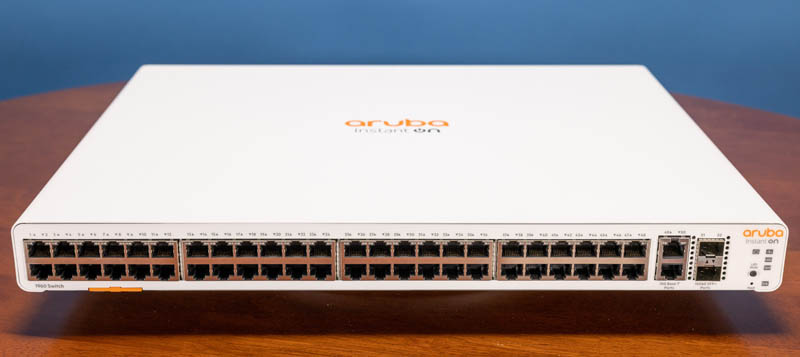
The main feature of this switch is its 1GbE port count. This has a total of 48x 1GbE ports. As a note, this is the JL808A model. There is also an Aruba JL809A that is the PoE version of this switch.
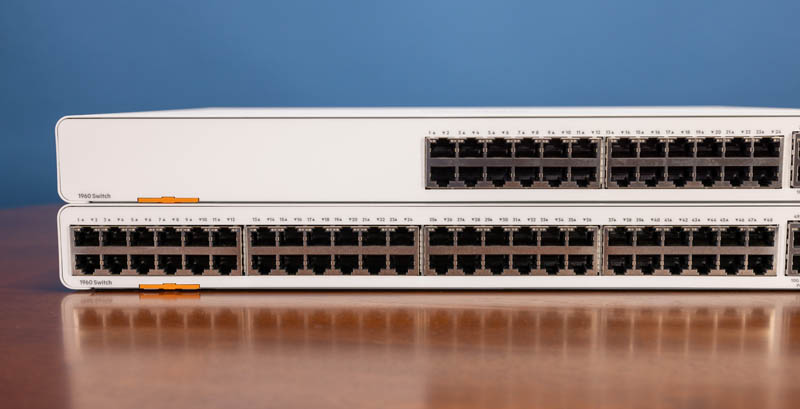
There is a part of us that acknowledges that the 1GbE market is huge. Still, for a late 2021/ early 2022 switch platform, it would have been nice to see a 2.5GbE offering. We have been seeing many more 2.5GbE corporate desktop PCs, firewalls, and WiFi APs recently so the ecosystem is transitioning, albeit slowly.
In terms of ports, there are four 10GbE ports. Two are 10Gbase-T ports. The other two are SFP+ ports. While it is nice to have dedicated 10Gbase-T ports, having four SFP+ these days with the prevalence of SFP+ to 10Gbase-T adapters would have been a more flexible solution in some circumstances. Then again, people search for switches by port type so having a 10Gbase-T port can make sense from a marketing standpoint.
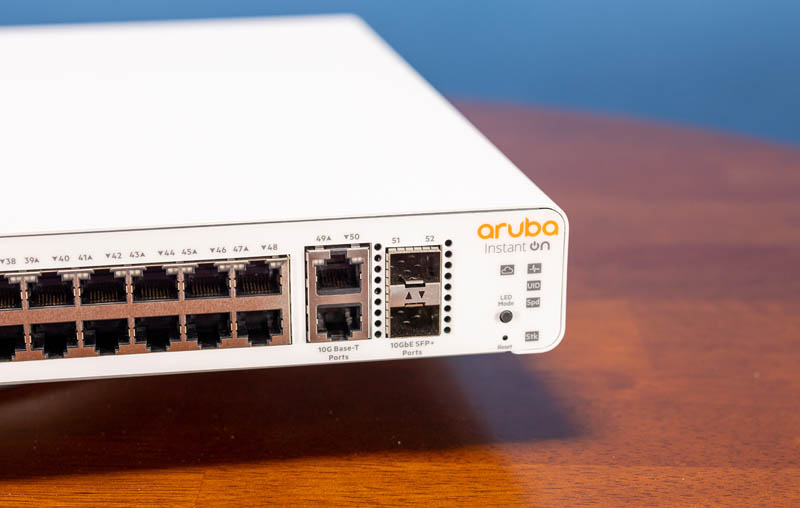
On the rear of the switch, we basically have just the power input. The PSU is internal and not redundant as we will see in the internal overview section.
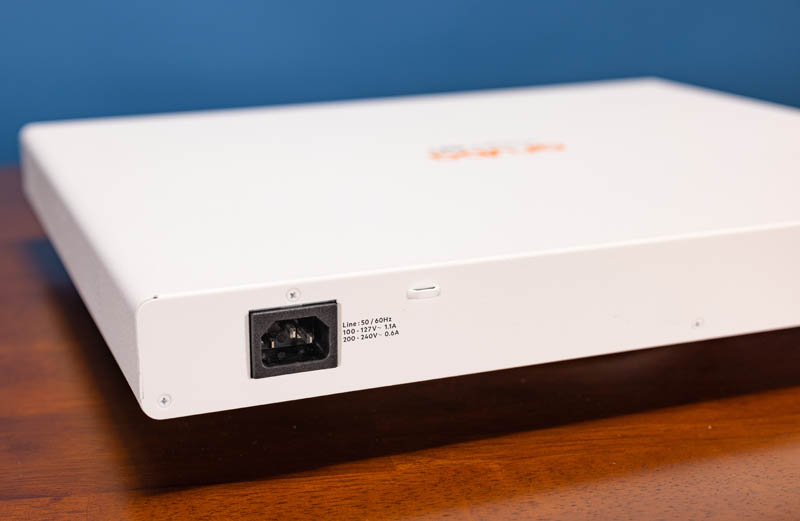
One item that must be noted is small but important. If you look at the Instant On 1960 24-port and 48-port switches you will immediately notice something. The LEDs, 10GbE ports, and twenty-four of the 1GbE ports are all aligned. Likewise, the power inputs on the rear are lined up as well. For those that obsess over cable management, this consistency is a virtue. It also makes the line feel like a higher-quality line since we have seen other vendors just use the lowest cost placement that ends up not aligned within switch lines.
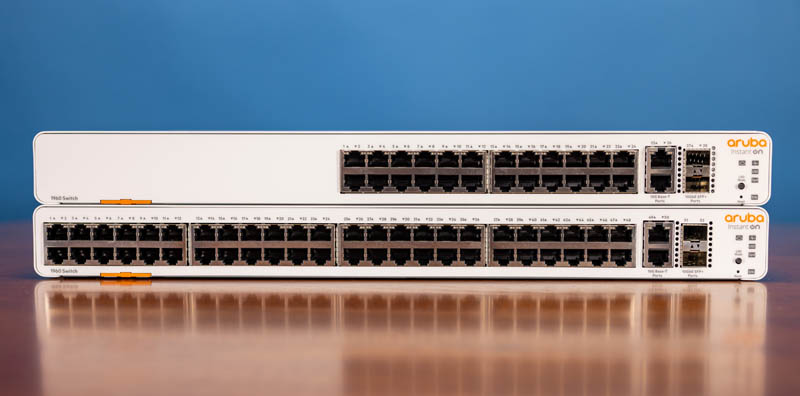
With that, let us get inside the switch to see how it works.

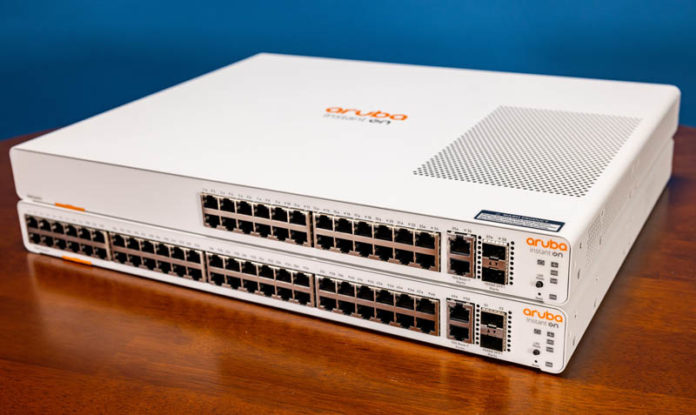



Do you have any insight into how well the more ‘advanced’ features work?
Things like the InterVLAN Routing, ACL rules, Stacking, and if that stacking supports MC-LAG?
The 1960 12XGT 4SFP+ (JL805A) Looks like an interesting model – ideal as a core for a small business, or connecting multiple servers, and then using the SFP+ ports to uplink to other switches?
Be interesting to see a review of that
Aren´t these switches essentially the same as the HPE Officeconnect 1950 series, but with a different (cloud) firmware.
JL805A – 1960 12XGT 4SFP+ vs JH295A – 1950 12XGT 4SFP+
Rather have a Ubquiti unifi for SMB. Unifi has better pricing more features, like you mentioned superficially POE. Additionally, where were these switches a couple of years ago? Late to market HPE/Aruba.
@Joeri – yes, but that goes for the whole of the 1960 line – e.g. JL808A = HPE OfficeConnect 1950 48G 2SFP+ 2XGT Switch JG961A.
There wasn’t much coverage of the 1950 line either, so would be interested to see some more coverage and what sort of limitations the range has.
I’m looking at the earlier 1930 24-port model as a replacement for an existing location that used unmanaged switches. Other than the 10GBase-T ports and stacking option, are there any differences in performance and OS features between the 1930 and 1960 lines? For more than twice the price of a similar 1930 on Amazon (and almost as much as the 1930 48-port with PoE) I’d expect quite a bit more from the 1960.
I think the value is higher in the Poe versions. Poe++ and 600w budget on 48 ports for 1800 with a killer warranty. We just picked one up for 1800 on b & h